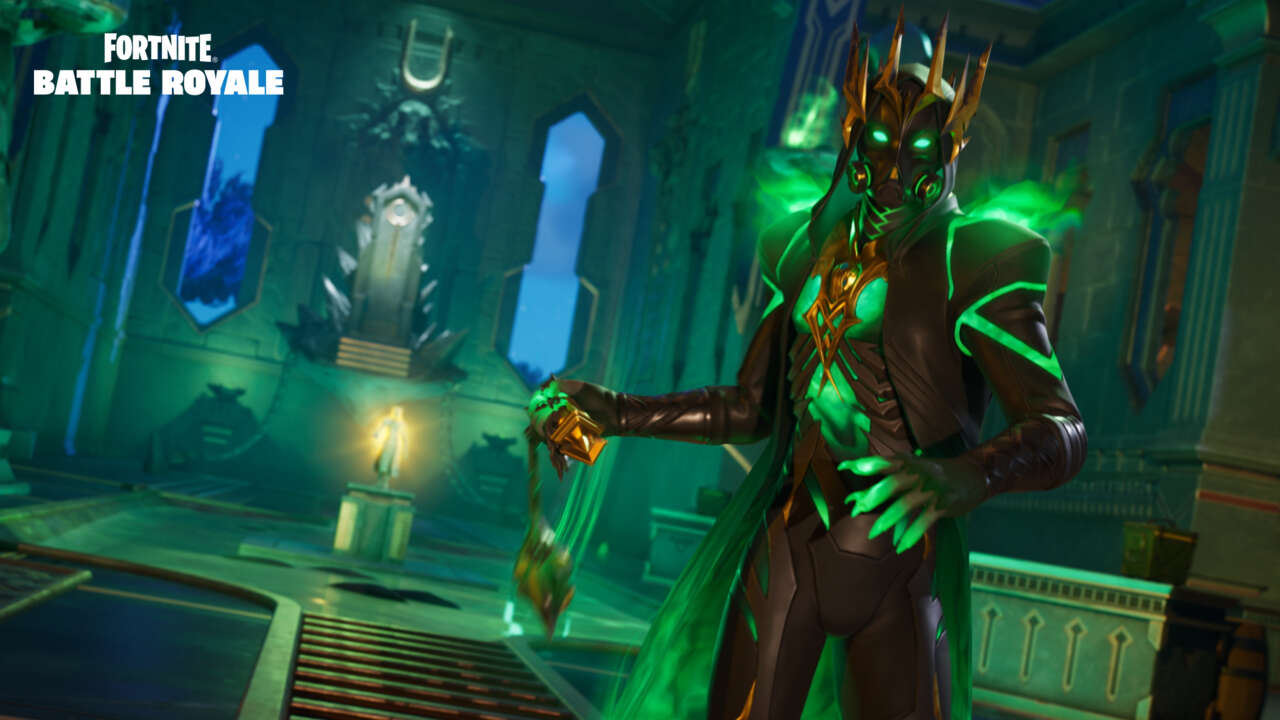Game of Thrones: Kingsroad Review in Progress
#news #newstoday #gaming #gamingnews #latestnews #gameupdates #newsupdates
Editor’s note: This review in progress is based entirely on the Early Access version of Game of Thrones: Kingsroad, and will be updated with final impressions after the playing the 1.0 version at launch.
Game of Thrones is a series synonymous with epic battles, familial betrayal, and mythical creatures. It’s no wonder, then, that developer Netmarble used it as the backing for its latest mobile-friendly open-world RPG, plopping you right into the middle of the original HBO show with one major goal to achieve: Power. Yet, after 20 hours gallivanting through the Early Access version of Game of Thrones: Kingsroad’s northern factions, consolidating my wealth ahead of its full launch this week, I can’t help but feel worried about what lies ahead as I work my way toward a final review. It’s not the towering enemies or backstabbing friends waiting for me down south that I fear – it’s the reality of just how much grinding (or money) it’s going to take to get there.
Set during the events of Game of Thrones’ fourth season, Kingsroad allows you to join the story as a bastard child and sole remaining heir of House Tyre. With your lord father unwell, your job is to explore Westeros in search of support so that you can buck the bastard title and ascend to lead your people when the time comes. You’ll meet plenty of familiar faces along this journey, too, from Jon Snow and Samwell Tarly to less likeable characters like Roose and Ramsay Bolton. While it might seem like a dense point in the overall plot to drop in, Kingsroad does a decent job of introducing the series’ broader themes through a speedy tutorial, which briefly takes you beyond the Wall to lay up the threat of the White Walkers and the world’s ongoing dynastic conflicts.
Before you grapple with the inherent drama of Westeros, you’ll need to pick a character archetype to play as – a decision that will dictate the style of combat you’ll use as you level up. There are three options to choose from: A balanced sword-wielding Knight, a beefy axe-wielding Sellsword, and a nimble dagger-wielding Assassin. Inspired by Tormund and Brienne of Tarth, I opted for the hulking Sellsword, whose rage and size could sweep through larger groups of enemies with relative ease. If you’re indecisive (like me) and want to mix up your playstyle, the good news is that you can start up an alternate class at any time from the main menu and share loot between your warriors. You’ll still have to replay the central story missions with each one, but this helpful feature at least allows you to sneakily boost their stats and speed through the early game.
Once you’ve made your choice, you’ll also be able to mould their look using Kingsroad’s surprisingly complex character creator. Alongside sliders that control each muscle of the face, you can choose beard length and colour, add battle scars, and even adjust the sheen of their hair. It hasn’t got the intense depth of something like Dragon’s Dogma 2 or inZOI, but I was pleasantly surprised by how much I could tweak my progeny’s features to my liking.
You can’t simply walk into King’s Landing and have your wish to rule House Tyre granted, though. To earn your regal title, you’ll need to work your way up the food chain and earn the respect of the ruling Ladies and Lords of the land. This means completing side quests, clearing out bandits and fiends, and collecting as much loot as you can carry to upgrade your armour. On the surface, this might sound like an enticing fantasy workload. Unfortunately, Kingsroad doesn’t quite have the technical chops to make these tasks truly draw you in.
At first glance, Westeros has been faithfully recreated, and I relished the opportunity to take in the vast icy presence of the Wall and explore the cobbled walkways of Winterfell. However, that initial sheen wears off quickly when you linger a little too long in an area. Patches of grass pop up and down uncannily, and objects or NPCs all start to repeat. Suddenly, this mythical world loses its lustre and feels like a strange simulation. That isn’t helped by how odd the NPCs look and move, with many of the citizens I came in contact with acting as either overly dynamic animatronics or still paintings that eerily follow you with their eyes. This unsettling style is most noticeable in conversations, with some villagers’ jaws and eyes oscillating in unnerving fashion as they explain their routine predicaments.
This strange locomotion applied to my own movement as well, and no matter if I was on foot or mounted, it always felt as though I was skating on ice. That was more noticeable on frosty ground, which is surely intentional, but it frequently seemed like I was skidding on top of dry earth as well, with a slight delay to all my actions. Drifting my mount through twisty country roads was funny to begin with, but the constant unwieldy nature of movement gets frustrating fast. Often enough, I would catapult myself off the edge of a hill into an enemy camp without the ability to quickly course correct.
Combat is also a mixed bag, with lots of repeated attack patterns whether I was taking on an area boss or a simple grunt. The foes I was facing were a rotating crew of the same faces, the only difference being how many I would face at once. You dodge or dash out of the way of enemies and then return their hits with a mixture of light, heavy, and special attacks that don’t really attempt to do anything unexpected or fresh. Occasionally, I would be surprised by a quest that required me to use some strategy, like separating select enemies from a larger pack to get an advantage – but more often than not, combat simply came down to taking on gaggles of soldiers until I’d meet their overly familiar boss.
The story cutscenes surrounding my actions were at least enticing, pulling at my heartstrings as they urged me to help find missing children or take out bandits that were attacking weakened farmers. Sadly, the actual process of completing those tasks quickly felt thankless because of the rote combat. There are upgrade trees that can diversify your moveset as you level up, and I’m keen to investigate them further to see how they impact encounters in the full game, but in this early portion, fighting is mostly monotonous.
Thankfully, you can find platforming puzzles nestled across the sizable, icon-covered map that offer a decent reprieve from the mindless fighting, even in spite of the floaty movement. Amongst the medieval castles and quaint villages, dilapidated buildings and cliff faces hide secrets that you can pinpoint with your area scanning tool. Hidden doorways and chests await, usually providing useful caches of loot or lore. When you’re wandering around and getting into the flow of it all, Kingsroad can start to resemble something like a stripped-back mobile port of Assassin’s Creed Valhalla. The interface design and structure of the open-world and combat seem particularly derivative of Ubisoft’s viking odyssey. It’s not a bad skeleton for a Game of Thrones game, though it can feel a bit egregious at times as you use your ping to highlight hidden enemies.
That said, barriers are set up around this open world in the form of Recommended Momentum requirements. Momentum is a bit like Gear Score in Destiny, a numerical valuation of your stats that takes into account your armour and skill progression, equipped accessories, and more. You’ll need to buff every aspect of your character in order to surpass the criteria required for exploring a new area, which is a reasonable enough limitation if properly tuned. But, rather predictably for a game with its eye on a mobile audience, the trove of consistent loot I was earning from early missions inevitably started to dry up, and I came face to face with the real amount of work needed to continue unlocking story missions. This is where the sinister undertone of Kingsroad’s live service design really starts to rear its head.
The bevy of activities available are persistently counterbalanced by the copious microtransactions peppered throughout. Even beyond the bog-standard battle pass and abundance of different in-game currencies, I was surprised to see just how much of the actual gameplay was tied to some form of transaction. For example, when you die in combat, you can choose to wait 30 seconds or pay to come back faster with all your healing items intact – an essential inclusion if you want to avoid trawling back to camp to buy more items. Alternatively, you can fast travel the slow way by hoofing it to a special signpost, or pay for a premium version where you can warp for free from anywhere on the map. Annoyingly, all of these features impact how efficiently you can reach the Momentum requirements needed to progress, so you’re always goaded to put your hand in your pocket.
Behind every passably accessible system was a far more user-friendly one, but only if you’re willing to fork out for it. It felt as though Netmarble was more concerned with making Kingsroad just frustrating enough to encourage people to spend a bit of cash rather than making the base game reasonably enjoyable on its own. While it’s naive to assume a free-to-play game such as this wouldn’t offer some form of paid content, a cash-based system has been implemented into almost every corner of what’s here, and it cheapens both the world you are exploring and any success you may find there.
Perhaps what’s most upsetting about this model is that beneath the plethora of currencies and grind-heavy progression, Kingsroad does have the capacity to capture the magic of its source material. Riding on a dire wolf across hazy pastoral lands and watching them gradually gain a coat of frost feels cinematic on occasion (and, again, as long as you don’t stop to look too closely). Plus, the stories of the quests I’ve tackled so far do well to curate a tragic atmosphere. But when push comes to shove, the mythic world I was reaching for was always shoved just slightly out of reach by some intrusive nudge to pull out my wallet.
If there’s a silver lining, it’s that it still feels as though I’m barely scratching the surface Game of Thrones: Kingsroad despite sinking over 20 hours into it already. There’s so much more I want to explore in the 1.0 version before I deliver my final verdict, like artefacts, upgrade trees, and the estate management systems. As of right now, though, one thing is abundantly clear: When you play Game of Thrones: Kingsroad, you pay or you die.
Check out our Latest News and Follow us at Facebook
Original Source







